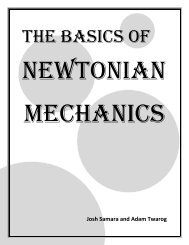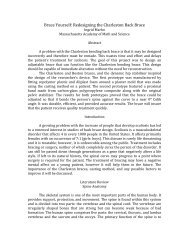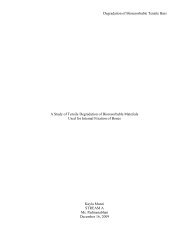Art Forgeries and Their Detection - the Scientia Review
Art Forgeries and Their Detection - the Scientia Review
Art Forgeries and Their Detection - the Scientia Review
You also want an ePaper? Increase the reach of your titles
YUMPU automatically turns print PDFs into web optimized ePapers that Google loves.
Carbon Dating<br />
Carbon dating is <strong>the</strong> use decaying nitrogen of radiocarbon, or Carbon 14, a<br />
common isotope, in order to determine a date around which a painting<br />
was maid. The neutrons commonly produced in cosmic rays form this Car-<br />
bon 14, <strong>and</strong> from that, scientists investigating <strong>the</strong> work of art <strong>and</strong> how old<br />
it is. The carbon has a life span, <strong>and</strong> after a certain point, it starts to decay<br />
at a constant rate, <strong>and</strong> because of its constant decrease in <strong>the</strong> presence of<br />
<strong>the</strong> radiocarbon, <strong>the</strong> age of some artwork could be determined by count-<br />
ing <strong>the</strong> number of remaining carbon 14. This technique is not relatively<br />
useful because it involves destroying a large amount of materials.<br />
Did You<br />
Know?<br />
● About half<br />
<strong>the</strong> amount<br />
of Carbon 14<br />
would have<br />
decayed after<br />
about 5,730<br />
years,

















